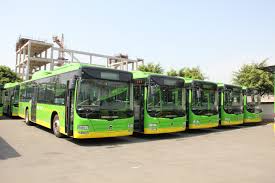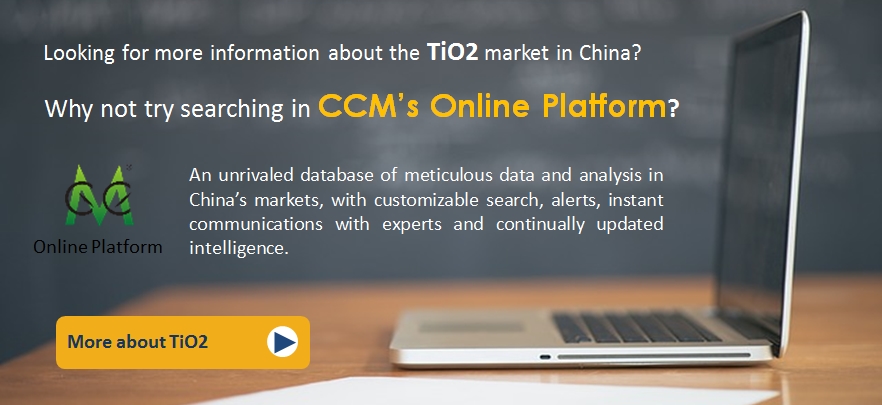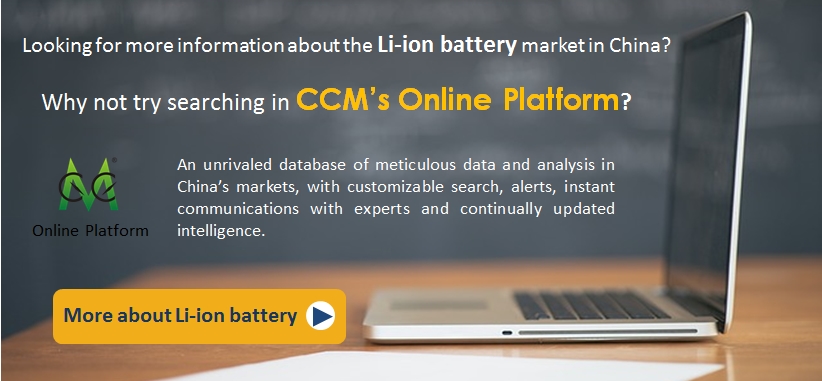China
is witnessing a growing market of lithium titanate batteries, driven by
investments in leading Chinese manufacturers in the TiO2 and battery industry.
As a promising sector in the booming li-ion battery industry in general, CCM sees a potential for this new high-end market for China’s TiO2 industry.

Source: Inside EVs
Lithium-ion
batteries are facing a boosting demand nowadays, due to rising interest in new
energy vehicles and electronic devices. The main raw materials for producing
lithium batteries is besides cathode materials, separators, and
electrolyte, anode materials. To be more specific, anode materials are
accounting for about 5% to 15% of costs for lithium batteries. Furthermore, the
manufacturing of the anode materials is highly concentrated in Japan and China,
due to technologically advantages in Japan and raw material cost advantages in
China. Hence, these two Asian countries are sharing a market share of 95%
worldwide.
One
of the raw materials, that can be used to build li-ion batteries is titanium.
The resulting lithium titanate batteries are attributed with a fast recharging
ability under the cost of losing inherent voltage, compared to other kinds of
li-ion batteries.
According
to market intelligence firm CCM, this new emerging high-end market in China
offers a huge opportunity for TiO2 suppliers, besides the traditional coating
industry.
Rising market trend
One
unmistakable sign to back up the growing trend of lithium titanate batteries in
China can be found in the actions of China’s TiO2 manufacturers. To start with
the far biggest supplier of TiO2, Lomon Billions, the company has
already shown investments into the lithium titanate battery industry in July
2016 by strengthening the cooperation with Allightec, a company from Taiwan
dealing with advanced graphene powder mass production techniques.
The
fields of cooperation between these two companies comprise Functional TiO2
(including but not limited to photocatalytic TiO2, electroconductive TiO2 and thermoconductive TiO2),
functional zirconium structural members, microwave absorbing coating materials
with aerospace applications, and function modification of lithium titanate.

Other
Chinese li-ion battery manufacturers, which showed investments in the
production of lithium titanate batteries, are Beijing WKW Automotive Parts and
HK Battery Technology. In addition to that, CITIC Guoan MGL and BTR Energy have
both expanded their lithium titanate capacity.
The
promising investments of China’s manufacturers result of the great potential in
energy storage cells markets. The benefits of energy storage cells, compared to
traditional batteries, lays in the long-life duration, lower production costs,
and a safe use. According to CCM’s research, lithium titanate batteries are able
to last up to 30 years, which is about fourth times the duration of phosphoric
acid iron batteries.
Lithium titanate
battery
Lithium-Titanate
is a more radical design that replaces the graphite in the anode with titanate
material. The advantages of this anode material lays in the
tremendously large surface area of its nano crystals, which can reach up
to 100 square meters per gramme, compared to 3 square meters of standard carbon
anodes. This structure enables the very fast charge and recharges abilities of
this material.
Other
benefits can be found in the long-life duration and the low-temperature
discharge characteristics. These safety reasons are especially important in the
industry uses for energy storage.
The
main disadvantage of lithium titanate batteries consists in the low voltage
capability and the resulting lower energy density.

The
current use of these batteries is mainly in electric vehicles and energy
storage. The fast charging capability makes this battery to a preferred energy
supplier for electric buses, which can even charge at passenger pick-up stops.
The high safety guarantee also increases the use in mobile phones and medical
devices.
Notably,
lithium titanate batteries at present account for approximately 5% of the
market share of batteries used for new energy vehicles. Looking at the area of
passenger vehicles, the share has reached 3% with other non-dominant batteries.
In China, domestic use of lithium titanate batteries is just in the beginning.
However, the future of this industry is depending on several factors including
technological development, state policies and consumption changes of the new
energy vehicle in China.
About CCM
CCM
is the leading market intelligence provider for China’s agriculture, chemicals,
food & ingredients and life science markets.
Do
you want to find out more about the energy and TiO2 market in China? Try our
Newsletters and Industrial Reports or join our professional online platform today and get insights in Reports, Newsletter, and Market Data at one place.
For
more trade information of Li-ion batteries, including Import and Export
analysis as well as Manufacturer to Buyer Tracking, contact our experts in trade analysis to get your answers today.
Looking
for a convenient way to get comprehensive and actual information as well as a
platform to discuss with peers about the latest chemicals industry and market
trends? Simply subscribe to our YouTube Channel.